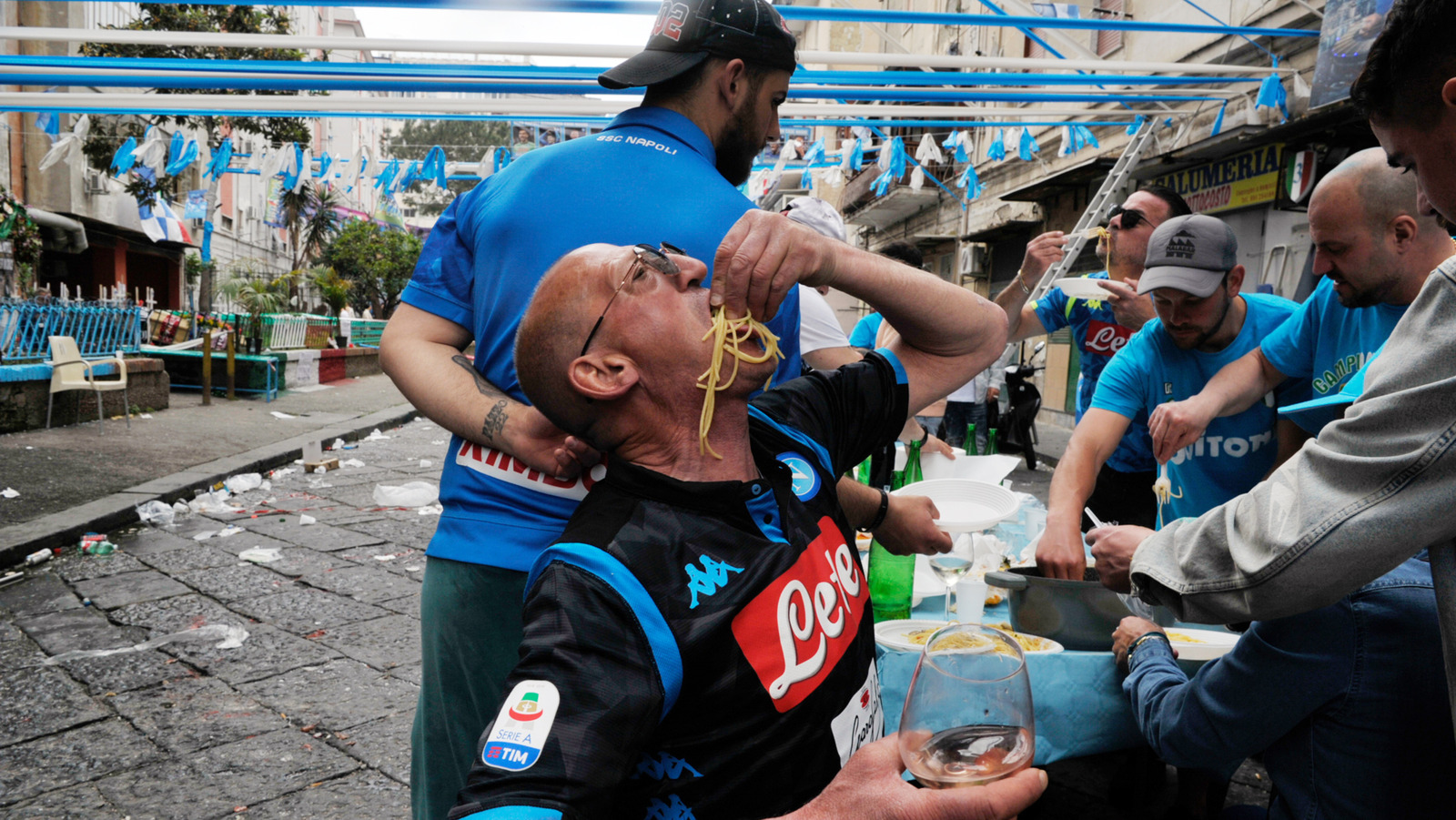
Italians are serious about their pasta. Many people know that pasta is a staple food in Italy and that citizens eat it regularly, but Italians are also often strict about the . Their technique involves a very precise way of twirling long strands around the tines of a fork.
It's never cut, broken, dangled in the air, or chopped up with a knife. It's hard to believe, then, that these pasta perfectionists once used their hands to eat it. Specifically, it was the poor citizens of Naples who basically made eating pasta with their bare hands a spectator sport of sorts from the 17th to the 19th century.

Since the 1300s, the fork had become the eating utensil of choice when it came to pasta, but it was also something that the wealthy ate, not so much the lower classes of Italian society. By the 1600s, pasta was much more affordable and people in Naples began to make it in huge quantities, the city eventually becoming the center of pasta production in Italy. Naples sought to take full advantage of its newly-acquired reputation.
For the entertainment of tourists, pasta street vendors would scoop out portions of freshly boiled spaghetti and give it to peasants nicknamed "macaroni eaters" (at the time, the word "macaroni" was used to describe any cut of pasta). These hungry performers would eat the hot noodles in one gulp with their bare hands for the smiles and laughter (and money) of the tourists. It was an early form of , in a sense, except there were no lavish prizes for the victors.
Not all pasta was created equal These culinary sideshows would help sell plates of pasta and boost tourism. "Macaroni eaters" were portrayed in travel books and paintings, and many people from around the world wanted to see the action in person. And, because they were in an area of Italy noted for its pasta, many tourists ordered a plate for themselves.
But, what they were served wasn't usually the same pasta that "macaroni eaters" were swallowing. Despite Naples having wonderful ingredient resources, and perfect conditions for drying pasta in the sun, not all of the pasta produced in the seaside city was what you would call sanitary. While the lazzaroni (the Italian word for Neapolitan street beggars) could often afford a portion of pasta, they were getting a lower-quality type than that sold to tourists.
This street pasta was made outdoors by dirty hands and hung to dry on the same racks that rags dried on so that it absorbed all the dirt and dust of bustling Naples. It was said to have a tangy flavor. Better quality pasta had no such acidity and was carefully handled and dried in cleaner, ocean breezes.
In the late 19th and early 20th centuries, pasta production largely transitioned from a hand-made item in Naples to a factory-produced commodity in central and northern Italy. As a result, street macaroni eating largely disappeared, and people started to use their forks. Recommended.















